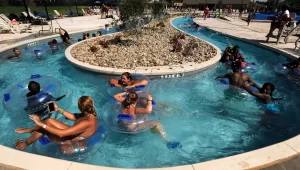We’ve all heard hundreds of sayings about the importance of planning. In all parts of life, we know that having a clear understanding of the outcome you desire to achieve and a set of logical steps to get there is the cornerstone of goal achievement. It’s no different when it comes to parks and recreation agencies and their definitions of success. Throughout the years, it’s become a common practice to set goals, examine your current assets, and create a recreation master plan for your parks and rec system. The practice is good in theory and is typically aimed at achieving the following results:
- Building credibility, support, and consensus: Master plans can highlight the importance of parks and recreation assets among key decision makers within your community and help garner their support
- Inform citizens of the community’s needs: Master plans are good tools for helping the public understand the areas and ways in which parks and recreation assets can better serve them
- Identify capital improvement and funding needs: Master plans can help determine the projects within the community that require funding
- Guide critical decisions regarding facilities, infrastructure, programming, and services
- Help develop an implementation strategy
However, we’ve all heard the saying about the best laid plans. Recreation master plans while well thought out and developed with the best of intentions, often fail to meet their stated purpose. This happens for a number of reasons, including:
- Inflexible: Most plans have a 20-year scope and may not evolve as the community’s needs change
- Expensive: Master plans often address all needs of a parks and recreation system. While that may seem appropriate, the scope of the document can be expensive to implement
- Incongruent: The plan may not be congruent with surrounding factors, including a city’s infrastructure needs
A Better Way to Perform Recreation Master Planning
It’s not about the plan as much as it is the methods of planning and strategies used to execute your plan. Rather than create a new master plan or fix the current one, rethink the outcomes that you’d like to see from your parks and recreation assets. In doing so, consider the following goals:
- Improving funding: This is particularly relevant during the COVID-19 pandemic. We’ve seen parks and recreation budget cuts before, particularly during lean economic times. It’s critical that we avoid this happening again. To accomplish this, parks and recreation systems must demonstrate their value to the community by showing the positive impact these assets have on numerous societal issues.
- Improving performance: How can assets and partners better serve the community in a cost-efficient way? This includes expanding the reach of the department, providing better service, and increasing revenues.
- Improving assets: Some facilities may be older and less able to support themselves financially and less effective in serving the community. In this case, new facilities may need to be developed and older ones enhanced.
Strategies for Activating your Recreation Master Plan
Activating your recreation master plan is about developing strategies to achieve these goals. Here are three strategies that we’ve seen reach success over the years:
Comprehensive Reporting
It’s critical that you communicate the important role that park and recreation assets play in enhancing your community. The best way to do this is by providing data to support it. In Florida, Sports Facilities Advisory has collaborated with the Florida Recreation and Parks Association to produce the first ever Impact Calculator. This tool helps park systems generate data that speaks to impact in six key areas, property values, healthcare spending, tourism spending, jobs creation, public spending, and the environment. The impact calculator creates a report that helps to quantify the value of parks and recreation assets and can prove valuable in discussions about budget.
Establish Partnerships
Many parks and recreation departments have the resources to maintain their assets but may not have to provide great programming on a consistent basis. Establishing partnerships with local companies can fill that gap. Partnerships can also be used to expand the reach of your assets as well as increase revenues. Example of this can be seen in partnerships with health systems and schools. Both have an interest in health and wellness and can establish programs in association with local recreation venues.
Be the Solution
The scoreboard matters and your strategy should focus on achieving results in the areas that align with broader initiatives for your community. One of the largest issues for many cities is increasing access to parks and rec assets for people in economically-challenged communities. Areas that need a good park the most, may not have one, while higher socioeconomic areas have more resources to support multiple facilities and programming. To combat this, there are several incentives for supporting development in low income areas including new market tax credits. The key is to inform decision makers of these programs, and, more importantly, of the impact that safe places and safe play has on kids and communities. Providing data to support this idea is critical.
At the SF Companies, we understand the budget and financial obligations, and performance expectations facing many communities Not only can we convey the value of your assets, we can build a recreation master plan that effectively supports your goals. Contact us today at 727-474-3845.






